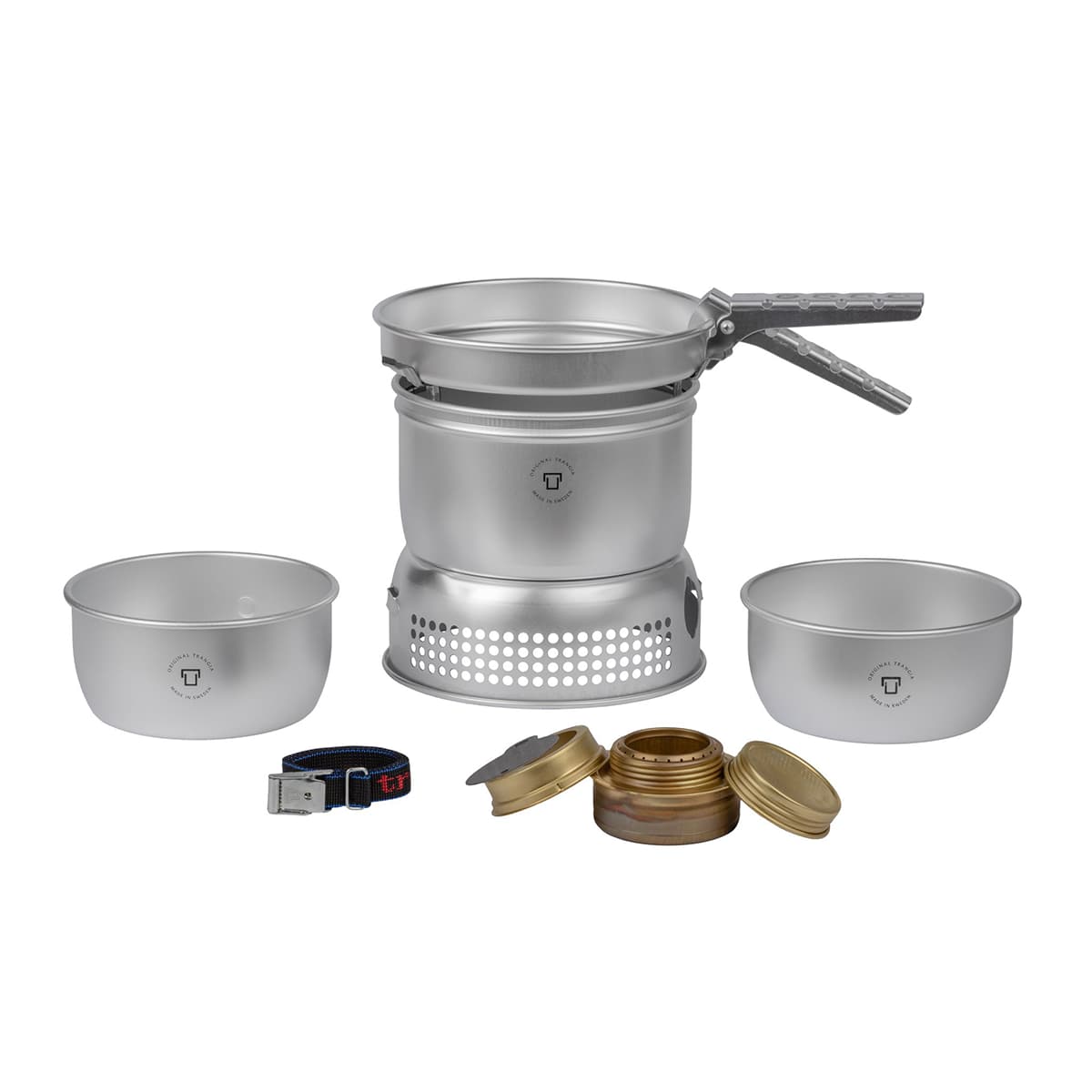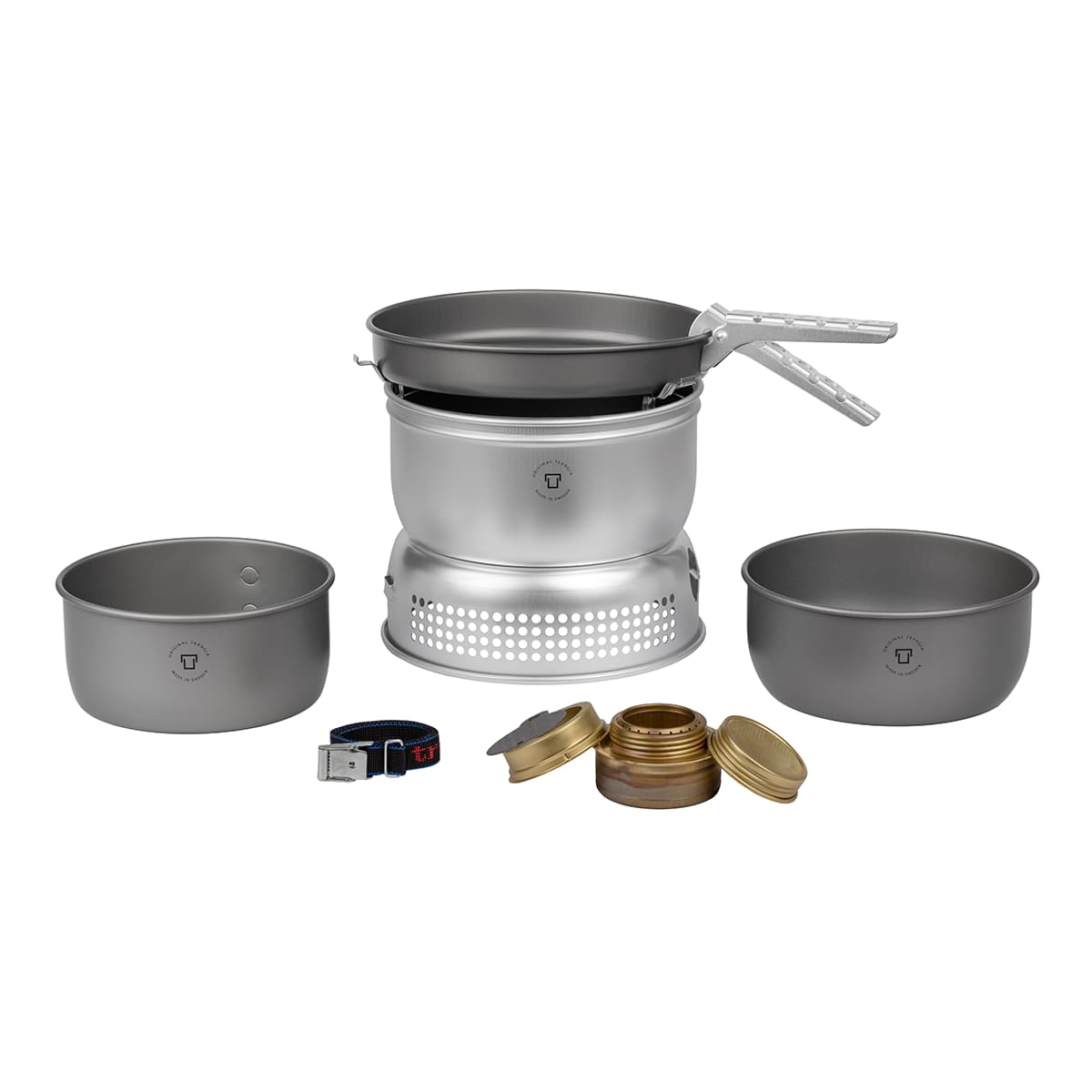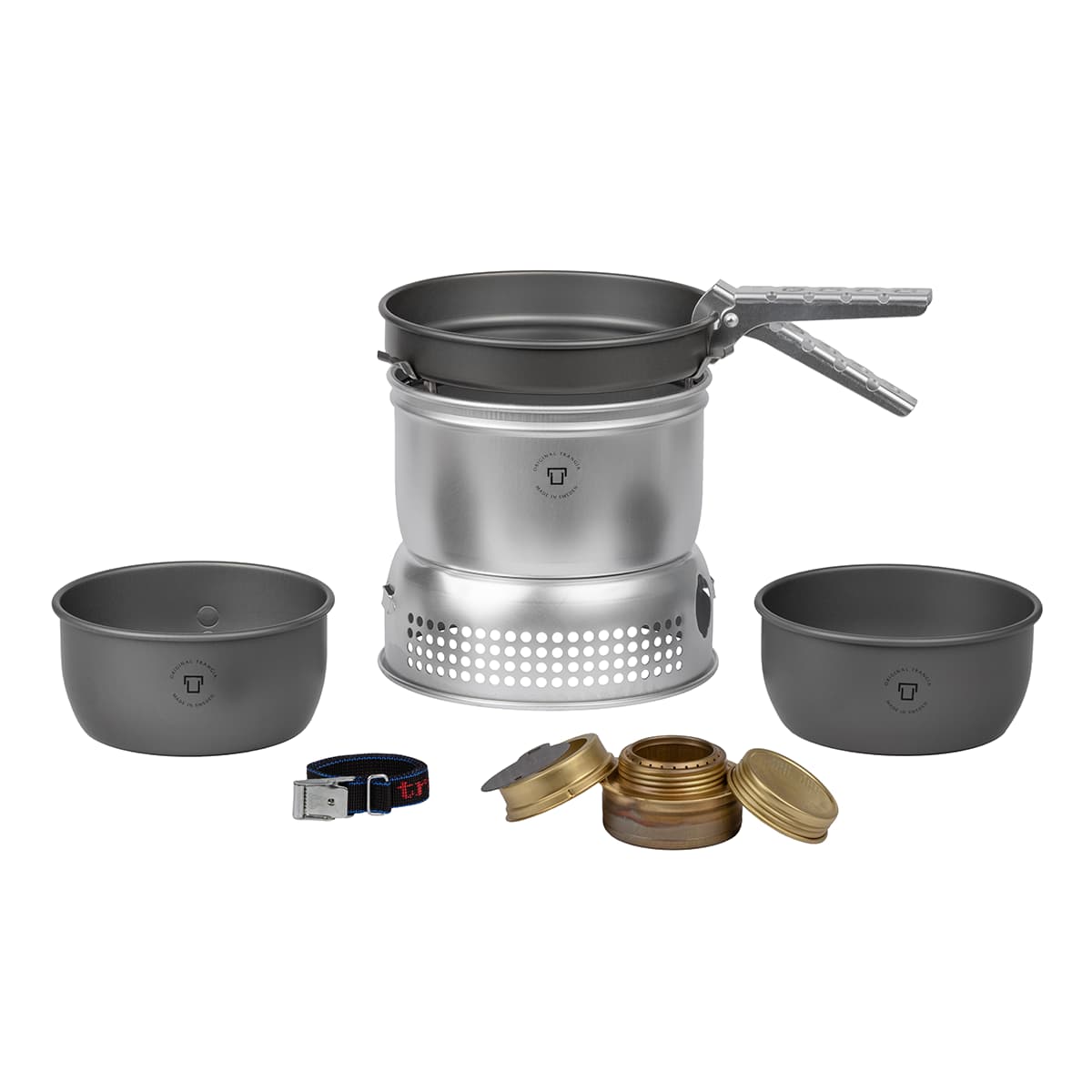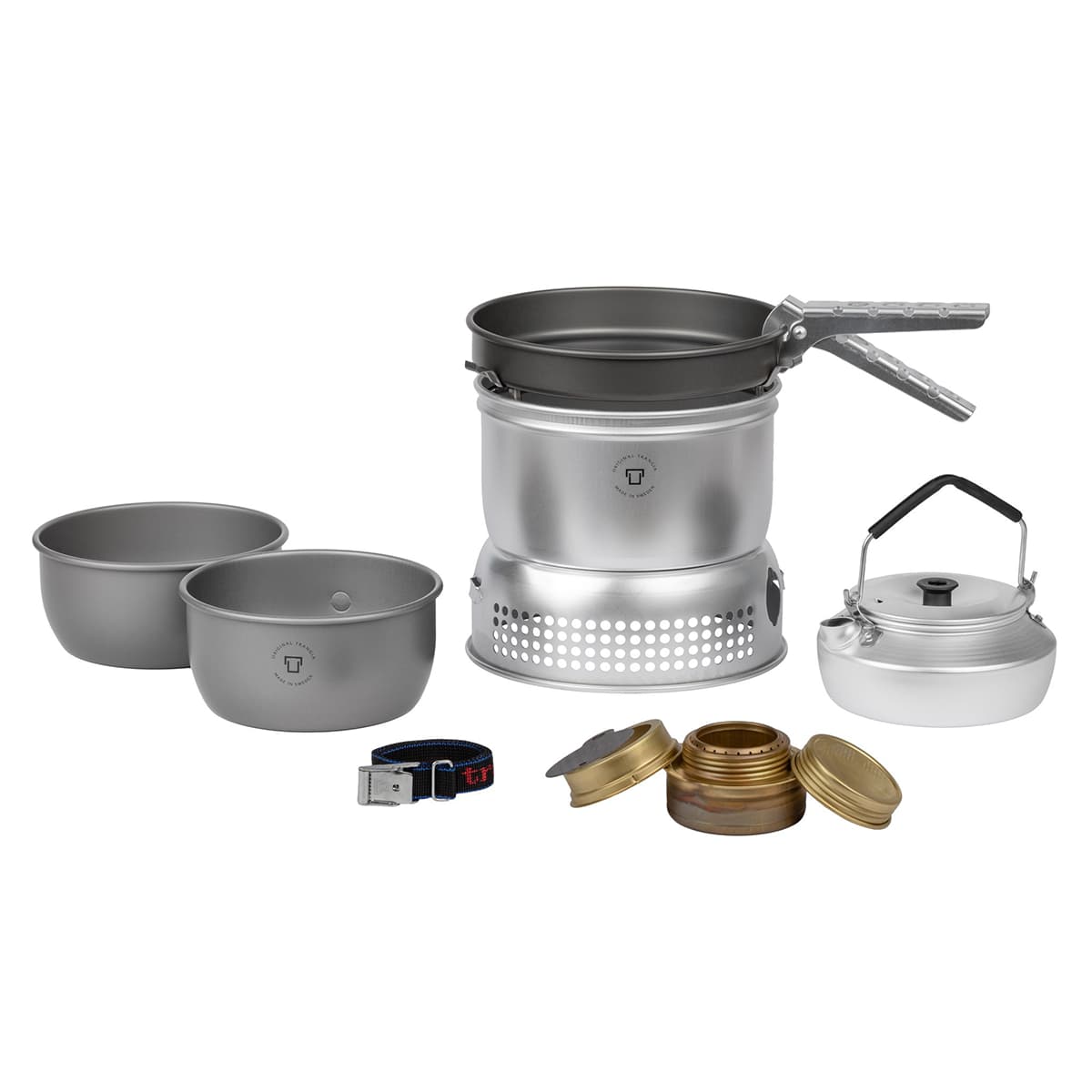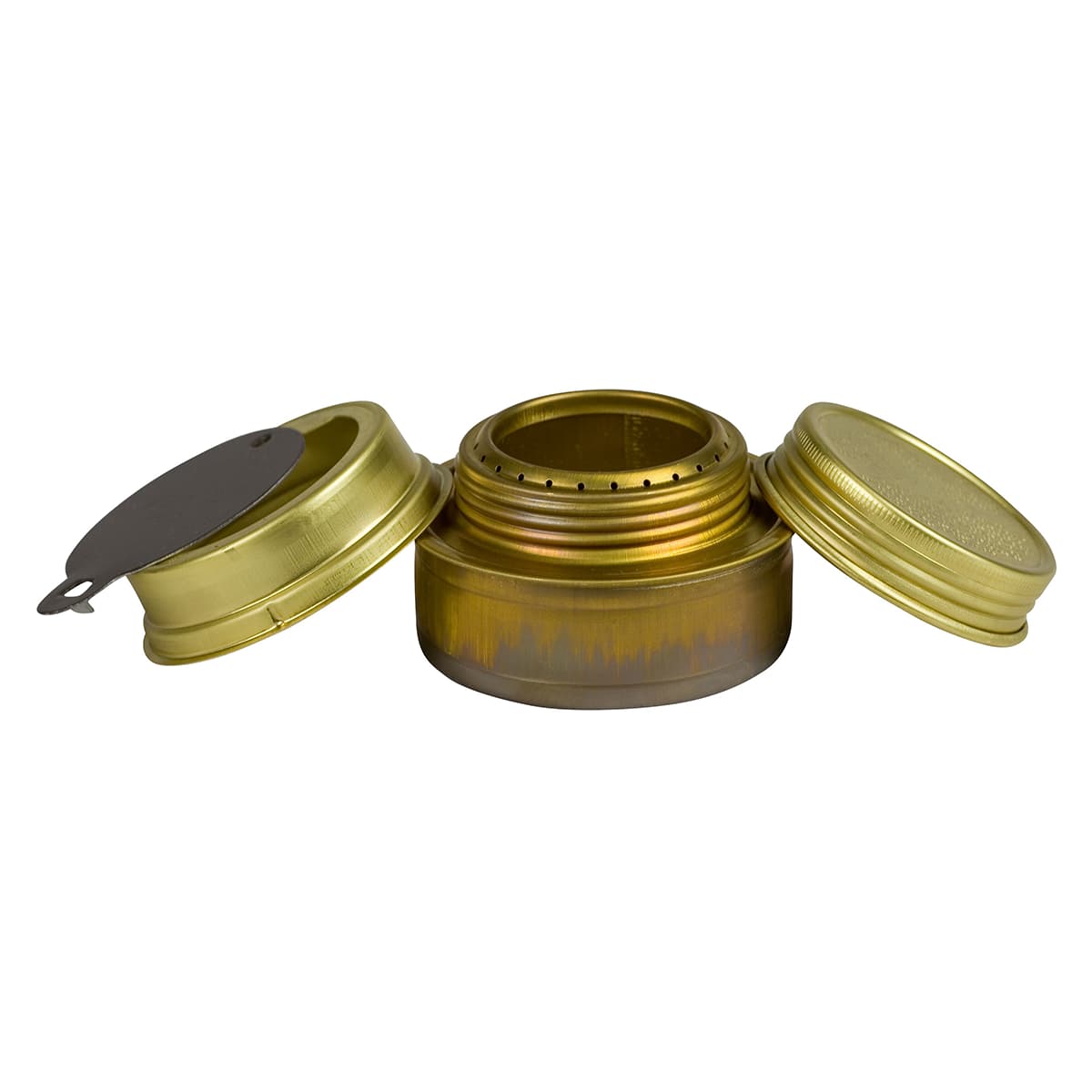Expert Video Review: Trangia Alcohol Stoves / Cooksets
Hello and welcome to The Canadian Outdoor Equipment Co’s vlog. My name is Tim, and today we’ll be exploring the Trangia alcohol stove in detail.
Growing up here in Canada, I’m sure like a lot of you, this is what I used on family and backcountry camping trips: a white gas stove. The major drawback of this type of stove though is what you’re hearing: the racket.
If only I’d known about this: The Trangia Alcohol Stove.
What I love about this stove is that it is operationally silent, maintenance free, and has no needles, jets, or moving parts. While many north Americans are unfamiliar with this type of stove, it is and has been widely used in Europe for decades, and offers several advantages over white gas or isobutane burners.
How the Trangia Alcohol Stove Works
This is the Trangia alcohol burner, which is made of brass - why brass? Because it’s resistant to corrosion, and provides very good material strength.
If you look at this this cross section, you can see it’s internal structure: the burner cup, the internal wick, and the interior burner wall. The burner cup features a series of holes around the top ring - this is where fuel vapour is released from the burner’s internal wick, and combusts. The wick is made from cotton, and sits between the burner walls. If you look here, you’ll see a space at the bottom of the burner cup. This is where fuel flows underneath, and makes contact with the wick where it absorbs fuel from below. Once the burner is lit, it will slowly self prime, heating the top of the burner cup so that convection pulls fuel through the wick to the top of the burner where it vaporizes and burns - creating vapour “jets” around the ring of the burner. In this way, the cotton wick itself doesn’t burn - it merely transports fuel to the top of the burner cup for combustion.
The beauty of this system is that there are no moving parts, and nothing to fail or break. Trangia burners always work - just pour fuel in, light and away you go.
Now let’s say you want to simmer at a lower heat level - no problem, the flame can be damped down by use of this adjustable damper ring. The damper ring also serves to extinguish the flame when you’re done. Just be careful not to use the burner’s gasketed cap to snuff out the stove - this is meant for closing up the stove after use, once the to burner has has a chance to cool down.
One thing I should mention about the use of the burner cup: it should not be burned bone dry of fuel, as this can lead to cracking of the burner cup. So always remember to extinguish the burner just before running out of fuel before refuelling.
The burner cup sits in Trangia’s windscreen base. You’ll notice that there are holes where the burner sits, and on the front of the windscreen. These are to direct airflow when the Trangia stove is in use. The front holes should be pointed into the direction of the wind, to ensure air flow from underneath to up and around pots and pans. This directs oxygen where we want the burner flame to heat. If the stove is oriented incorrectly, and airflow reversed, it is possible for the burner flame to be pulled down over the windscreen base, and can, in extreme cases deform or melt the windscreen.
Because Trangia burners are unpressurized, they do not burn as hot as other fuel sources. This does mean slightly longer boil times, but would you rather have 4 minutes of this: (shot of white gas burner) or 10 minutes of this: (shot of Trangia burner).
For cooking, I’ve always appreciated the adjustable heat for frying or making bannock without having to worry about blow-torch-like scorching that can happen with other stoves.
Fuel Types
There's many different fuel types available for the Trangia stove, so check out our video: Fuel Types for Trangia Stoves in Canada.
Shop The Gear
Tim Foley
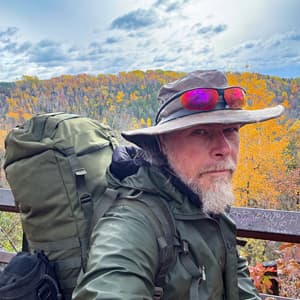
Tim grew up spending summers and much of his spare time in the backwoods of Northern Ontario and has been canoeing, camping and hiking ever since. When not running the Canadian Outdoor Equipment Co., you can find him riding his bike, hiking the Bruce Trail, canoeing, or clearing trails, cutting firewood and testing gear out in the bush.

